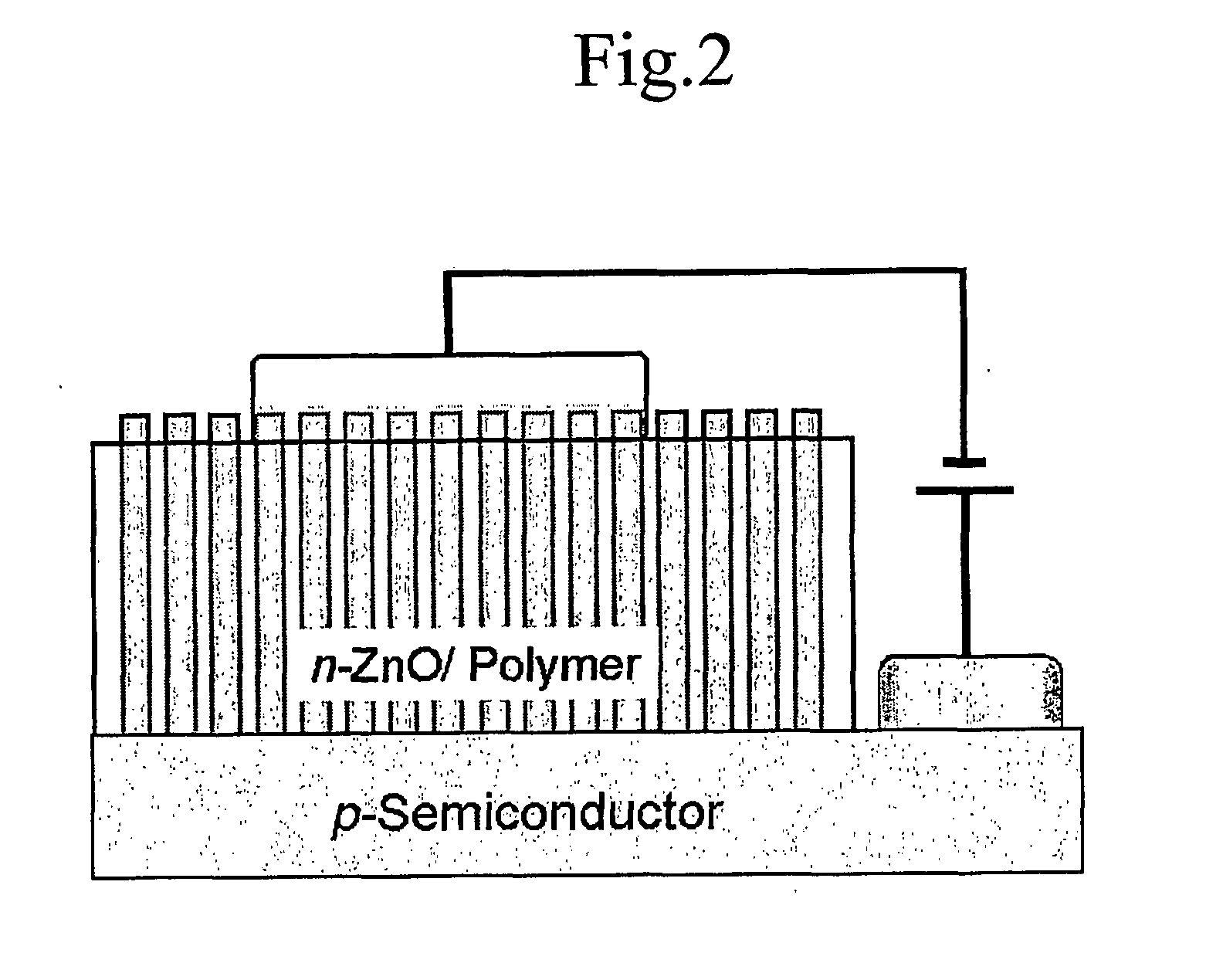P-n heterojuction structure of zinc oxide-based nanorod and semiconductor thin film, preparation thereof, and nano-device comprising same
- Summary
- Abstract
- Description
- Claims
- Application Information
AI Technical Summary
Benefits of technology
Problems solved by technology
Method used
Image
Examples
example 1
The Growth of ZnO Nanorods on a P-Type GaN Thin Film
[0033] ZnO-based p-n heterojunction structure was prepared by the process as shown in FIG. 1 as follows.
[0034] An Mg-doped GaN thin film was deposited on an Al2O3 substrate using a conventional MOCVD technique and annealed, to obtain a p-type GaN thin film having a thickness of 2 μm. The metal organic precursors used were trimethylgallium (TMGa) and bis(cyclopentadienyl) magnesium ((C5H5)2Mg); and the nitrogen precursor, NH3.
[0035] Then, n-type ZnO nanorods were vertically grown on the p-type GaN thin film thus obtained, by injecting gaseous Zn(C2H5)2 and O2 at flow rates in the ranges of 1 to 10 sccm and 20 to 100 sccm, respectively, with an argon (Ar) carrier gas and reacting the vapors for about 1 hour, to obtain a p-n heterojunction structure comprising n-ZnO nanorods grown on the p-GaN thin film. The reactor pressure and temperature were maintained in the ranges of 0.1 to 10 torr and 400 to 700° C., respectively, during the...
example 2
Fabrication of a Light Emitting Diode
[0037] A light emitting diode was fabricated using the heterojunction structure prepared in Example 1 as follows.
[0038] First, the free space around the ZnO nanorods grown on a GaN thin film was filled up by depositing an insulating material (e.g., photoresist, polyimide, etc.) thereon, and then, the tip portion of the nanorods was exposed by etching using a plasma. Subsequently, a Ti (10 nm) / Au (50 nm) top ohimic electrode was formed at the tip portion of the etched n-type nanorods; and a Pt (10 nm) / Au (50 nm) bottom electrode, on the p-type GaN thin film, by a thermal or electron beam evaporation technique. The applied accelerating voltage and emission current were in the ranges of 4 to 20 kV and 40 to 400 mA, respectively, during the electrodes deposition, which was conducted under a reactor pressure of around 10−5 mmHg, while keeping the substrate temperature at room temperature.
[0039] The cross-sectional morphology of the top electrode-fo...
PUM
 Login to View More
Login to View More Abstract
Description
Claims
Application Information
 Login to View More
Login to View More - R&D
- Intellectual Property
- Life Sciences
- Materials
- Tech Scout
- Unparalleled Data Quality
- Higher Quality Content
- 60% Fewer Hallucinations
Browse by: Latest US Patents, China's latest patents, Technical Efficacy Thesaurus, Application Domain, Technology Topic, Popular Technical Reports.
© 2025 PatSnap. All rights reserved.Legal|Privacy policy|Modern Slavery Act Transparency Statement|Sitemap|About US| Contact US: help@patsnap.com



